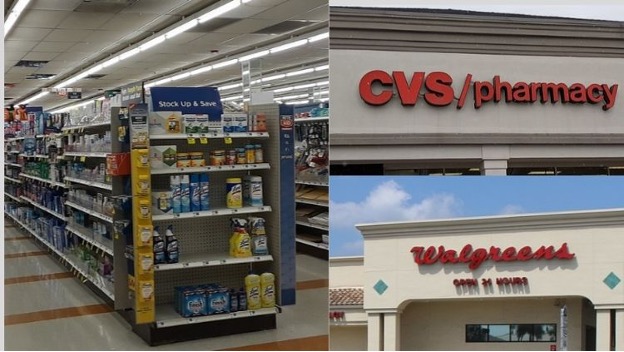The Closure of Thousands of CVS, Walgreens, and Rite Aid Stores Nationwide: What’s Behind It?
 Wikipedia
WikipediaFor decades, drugstore chains like CVS, Walgreens, and Rite Aid have been a universal presence across US cities, towns, and suburbs, offering a variety of medications, essentials, and healthcare. However, recent trends indicate a significant shift in this landscape as thousands of these stores are closing, leaving gaps in communities and raising concerns about healthcare accessibility.
Rite Aid, the third-largest standalone pharmacy chain, recently filed for bankruptcy, signaling the financial woes faced by many drugstore chains. According to reports, Rite Aid will be closing up to 500 of its nearly 2,200 stores. The company’s financial challenges can be attributed to fierce competition from larger rivals, a debt load of $3.3 billion, and expensive legal battles related to its alleged role in the opioid crisis.
Another challenge facing the drugstore industry is labor disputes and low pay, which have led to walkouts by Walgreens pharmacists and technicians across the country and CVS store employees in Kansas City. These protests have shed light on the combined issue of understaffed stores and inadequate compensation.
The profitability of drugstore chains primarily relies on prescription filling, but this segment’s profits have been declining due to lower reimbursement rates for prescription drugs. Additionally, the sale of everyday items in the front end of drugstores, such as snacks and household essentials, faces increased competition from big-box stores like Walmart, Amazon, and Dollar General in rural areas.
And then we enter the COVID-19 pandemic, which brought a mix of challenges and opportunities for drugstores. While there was a surge in demand for COVID-19 vaccines, fewer consumers visited stores for shopping, and prescription volumes declined due to postponed elective procedures.
In some locations, drugstores have also faced growing problems with theft, leading to security measures such as product locking. However, these measures have negatively impacted the customer experience.
To adapt to changing consumer needs and market dynamics, drugstore chains have been exploring opportunities in the healthcare industry. CVS’s acquisition of health insurer Aetna and Walgreens’ investment in primary care network VillageMD are examples of this strategic shift. However, this healthcare focus requires fewer brick-and-mortar retail stores.
The closure of retail pharmacies can have a significant impact, particularly on lower-income households. Studies have shown that the closure of pharmacies can disproportionately affect low-income neighborhoods and individuals relying on public insurance plans with lower reimbursement rates.
In conclusion, the closure of these drugstore chains are driven by a combination of financial pressures, labor issues, increased competition, and shifts in consumer behavior. While these changes reflect the evolving nature of the healthcare and retail industries, they also raise concerns about healthcare accessibility and the potential void left in many communities due to the closure of these stores.




